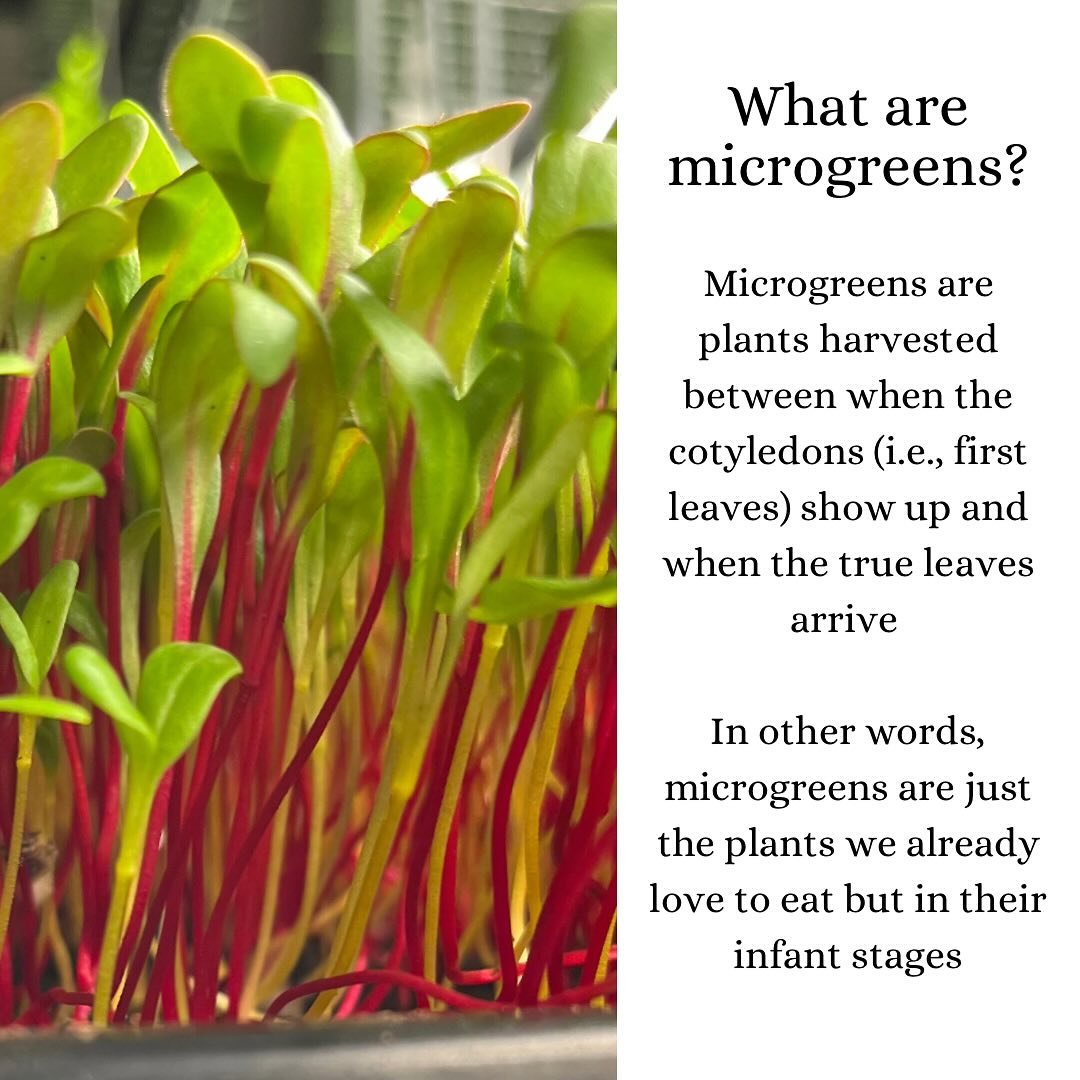Microgreens CSA
Learn more about our Winter 2024 (January-March) CSA here where you can sign up and and follow payment instructions.
How does the microgreens delivery model work?
CSA stands for community supported agriculture. Within a CSA subscription model, people pre-pay for shares of the goods produced. In our CSA, members pre-pay for a specific number of weeks and we deliver 3 types of microgreens each week.
Microgreens are typically harvested within 8 to 36 hours before delivery. For example, microgreens for Saturday morning delivery are often harvested on Thursday or Friday, depending on how quickly the plant is growing.
Microgreens CSA members then leave a cooler on their doorstep and we drop them in and send a text to confirm delivery.
Can other products be delivered with the microgreens?
Yes, depending on the time of year and what is available.
Each week, we send an email to the CSA members to let them know what other items are available for delivery, including produce from the garden, flowers, and eggs.
CSA members then add on to their order and we will deliver along with the microgreens.
Are the microgreens organic?
The microgreens are not considered organic. We do not usually buy organic seeds; however, we do use a certified organic seed starter, Coast of Maine organic seed starter, Sprout Island Blend, which we buy from Fifth Season Gardening Company in Carrboro, NC.
Given the short growing cycle, microgreens are not typically treated for pests. Consequently, no additional treatments or additives are applied to the microgreens.
What can you do with microgreens?
Drop a generous cup of pea shoots, sunflowers (sunnies!), broccoli, or kale blended into our breakfast smoothies.
Use either pea shoots or Sunnies to form the base of our weekly lunch salads (in place of lettuce). Then, we typically add 2 more varieties (e.g., beets, kale), then top the salad off with a meat/protein source, peppers, onions, etc.
Stir fry sunnies or pea shoots with other veggies as a side dish.
Make a raw or cooked micros bed for meat/protein during the main course then topped it with another. For example, we recently sautéed pea shoots in garlic then laid a burger on top. We then topped it with radish microgreens. The sweetness of the pea shoots and the sharpness of the radish greens was a fun adventure.
Make pesto! Basil microgreens make an incredible pesto and you can add some arugula microgreens for added flavor and volume.
Mix them into omelets with a bit of goat cheese or just top a fried egg with a few microgreens. The fried egg and arugula microgreen mix is a household favorite.
Toasted English muffin sammy with turkey, avocado, mayo, and pea shoots (or sunnies…or really any of them!). This one is a little specific but a recent mind boggling creation.
Strategically placed beet greens to cover up your farm fresh fried eggs that came out looking like someone already ate them.
But why microgreens? Because they are…
Efficient sources of nutrients - nutrients are super concentrated into these tiny plants! They may contain 4 - 40 times more nutrients than their mature/full grown counterparts. So for the same volume, you get more good stuff like phenolic antioxidants (broccoli), β-carotene, the precursor to Vitamin A (radish and mustard), and α-Tocopherol, aka Vitamin E (sunflower and radish).
Versatile tools for enhancing flavor in your usual dishes - top off your sammies, stir them into soups, roll them into wraps, and sauté them in your stir fry.
Gorgeous garnishes - sometimes it’s hard to tell whether the extra leaves on your plate at a restaurant are edible or thin plastic shaped like kale (and sometimes you eat it and you’re still not sure). That doesn’t happen with microgreens. Used as a garnish, they boost the confidence and status of your plated foods while also sharing a lot of flavor for such small plants.
Milder versions of their bigger selves - Want broccoli but looking for something a little less brocolli-ish in flavor? Try its mini-me! Looking for something earthy but not a veggie that actually hints of dirt? How about beet microgreens? Want to sneak in vegetables to the non-believers? Hide tiny microgreens in their food!
A better salad base than lettuce - let’s be honest, lettuce is good a vehicle for a tasty dressing or a nice blanket for a fat piece of cheese in your salad. But other than that, there isn’t much to it. Sorry, lettuce family.
Ideal for sloppy salad eaters - This one is personal. Ever try to stuff giant lettuce leaves smothered with dressing into your mouth at a restaurant and end up with ranch from chin to cheek? Not with these little greens.









